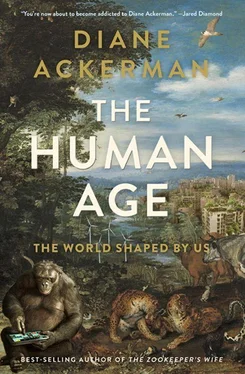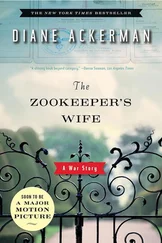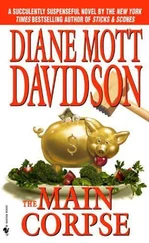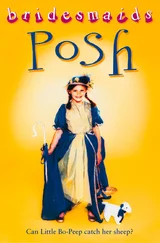Blanc’s study is a green thought in a green shade where he’s walking on water. Literally. The floor is a sheet of plate glass atop a 20′ x 23′ aquarium, home to a lush expanse of vegetation and over a thousand tropical fish. Holding 5,283 gallons of water, it’s loaded with plants whose long white roots ripple like medusas, as they naturally purify the water and also provide grottos for the fish.
The large wall behind his glasswork table is a weave of plants with plush textures, mossy tussocks, cascading fronds, and a kaleidoscope of greens. At the base of the living walls, a narrow stream flows, providing nourishment for roots and refreshment and nesting sites for the birds. He dips a hand in as a bird glides overhead to perch in the rhododendrons. Here and there, algae, moss, and liverworts have sprung up on their own. In a large bookcase, nearly all the books have green jackets. Only little brown bats and bombardier beetles are missing.
“I take my shower outside every day, even if it’s snowing,” he confesses. “I refuse to heed the limits between inside and outside imposed on a human lifestyle that migrated from tropical origins to colder, even glacial climates. To heighten the absurdity, life in tropical cities requires air-conditioning to cool the indoor atmosphere. Wherever one goes in the world, regardless of the season, it is necessary to either heat or cool dwellings.” This merits a hand lifted to the absurdity. “We need buildings with a better thermal balance.”
Despite his serious purpose, a spell of playfulness pervades his preferred habitat, as it does his person. His shirts all seem to be patterned in leaf designs; he wears green shoes, has a two-inch-long thumbnail painted forest green, and wears a streak of bright green in his hair. For a moment I think he might have a single leaf of Iris japonica growing from his skull—his green forelock is shaped like one of its long, tapering leaves. It is his signature plant: one often sees Iris japonica dangling down forest edges in the wild. Blanc uses it in most of his installations as an echo of gently cascading water.
“We live in an era where human activity is overwhelming,” he continues. His chilled white wine, Vogue menthol cigarette, computer, and electric lights make it clear that he does appreciate cosmopolitan life. In fact, he’s spent all of his life living in cities—while making forays to some of the wildest places on Earth.
“I think we can reconcile nature and man to a much greater degree.”
He’s not alone in that conviction. A good start may be rethinking our houses, because at the racing heart of every city is still the ancient, unalienable idea of home.
Home, for the Inuit, had an elemental simplicity. They used bone knives to carve bricks from quarries of hardened snow. A short, low tunnel led to the front door, trapping heat in and fierce cold and critters out. Mortar wasn’t needed, because the snow bricks were shaved to fit, and at night the dome ossified into a glistening ice fort, with the human warmth inside melting the ice just enough to seal the seams. The idea behind such homes was refuge from elements and predators, based on a watchful understanding of both. The igloo was really an extension of the self—shoulder blades of snow and backbone of ice, beneath which a family slept, swathed in thick animal fur, beside one or two small blubber lamps. All the building materials lay at hand, perpetually recycled, costing nothing but effort.
Picture most of our houses and apartment buildings today—full of sharp angles, lit by bulbs and colors one doesn’t find in nature, built from plywood, linoleum, iron, cement, and glass. Despite their style, efficiency, and maybe good location, they don’t always offer us a sense of sanctuary, rest, or well-being. And they’re not particularly healthy. A U.S. Environmental Protection Agency study found levels of twelve volatile compounds two to five times higher indoors—no matter if the home was rural or urban—due to the products we use and poor ventilation. Because we can’t escape our ancient hunger to live close to nature, we instinctively encircle the house with lawns and gardens, install picture windows, adopt pets and Boston ferns, and scent everything that touches our lives.
No wonder there’s an impassioned push worldwide to build green homes with verdant walls and roofs, inspired by Patrick Blanc, equally green workplaces that breathe and clean themselves like street cats, and well-tilled farms on rooftops and in ziggurats. It doesn’t make sense to shut out nature in the old way. Our fundamental archetype of a foursquare, armorlike building perched on a scrap of earth is evolving from a static and ultimately disposable dwelling into one that, like a tree, mingles holistically with the world around it, not just absorbing a staggering amount of nutrients but producing even more than it consumes.
An alternative is the culture of sustainability and “cradle to cradle” design redefining the world of goods and architecture and city planning. According to the principle of “cradle to cradle” (a term coined by the Swiss architect Walter R. Stahel in the 1970s), everything we make—apartment buildings, bridges, toys, clothes—should be designed with reclamation and rebirth in mind. Instead of tossing the outmoded ephemera of civilization onto rubbish heaps, and then extracting and grinding down more resources to replace them, why not fabricate objects that will naturally biodegrade or can be recycled by industry as “technical nutrients”? Durables such as televisions, cars, computers, refrigerators, heaters, and carpets could be leased and traded in when worn out or untrendy, allowing manufacturers to recycle them and harvest the raw materials.
In 1999 the architect William McDonough accepted the challenge of redesigning Ford Motor Company’s eighty-five-year-old River Rouge factory, a project that required redesigning the ten-acre roof of its 1.1-million-square-foot truck assembly plant. He began by endowing the roof with its own weather system—acres of sedum, a low-growing succulent that blooms dusty-pink or linen-white in the fall and the rest of the year displays large rain-swollen leaves. Then he knitted the factory and plants into the landscape with “a system of wet meadow gardens, porous paving, hedgerows and bio-swales that attenuates, cleanses, and conveys storm water across the site.”
Inspired by such models, and hoping to rank high on the prestigious LEED (Leadership in Energy and Environmental Design) rating system, architects are vying to create equally well-behaved buildings that “are environmentally responsible, profitable and healthy places to live and work.” They’re striving for regenerative buildings that purify their wastewater, create more energy than they use, and compost and recycle to such an extent that industry blends seamlessly with nature. “In essence,” Andres Edwards writes in The Sustainability Revolution , “a world of abundance, rather than limits, pollution, and waste.” This revolution stems from an ethos that’s reverberating around the world in developed and developing countries alike; as Edwards reminds us, “Brazil, Canada, China, Guatemala, India, Italy, Japan, Mexico, and Netherlands Antilles have LEED-registered projects, demonstrating that the standard can adapt to different cultures and bioregions.”
We aren’t adhering any longer to the myth that food must be grown far away and transported on trucks. We can easily envisage restaurant rooftop farms, urban beekeeping and midtown chicken coops. We can’t grow everything around the corner—not grains, or soy, or corn, to be sure—but we can grow most of our vegetables and fruits. Local farms feed the food chain, save fuel, and guarantee a fresher and more nutritious diet. And they’re cropping up on every continent, including the last place one might guess.
Читать дальше












